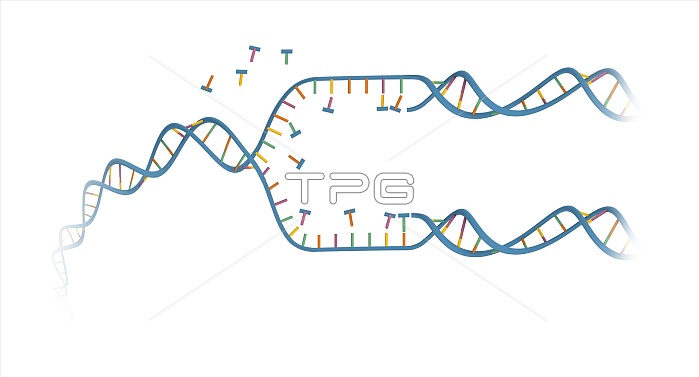
DNA replication, illustration. Strand of DNA (deoxyribonucleic acid) splitting (centre left) and forming two identical copies (right). DNA consists of two strands (blue) of sugar phosphates forming a double helix (spiral). The two strands are held together by bonds between their nucleotide bases (coloured bars). There are four nucleotide bases, but they pair in only two combinations (here, pink-yellow and green-orange): guanine to cytosine, and thymine to adenine. Hence each DNA strand is a complementary copy of the other. As the original strand splits, this complementary base chemistry causes a reverse copy to assemble next to each half, reforming the original DNA strand. This is known as semi-conservative replication. The nucleotide base sequence is the genetic code. DNA, which is stored in cell nuclei, is the genetic material that controls the growth and development of all living organisms.
| px | px | dpi | = | cm | x | cm | = | MB |
Details
Creative#:
TOP24869439
Source:
達志影像
Authorization Type:
RM
Release Information:
須由TPG 完整授權
Model Release:
N/A
Property Release:
N/A
Right to Privacy:
No
Same folder images:

 Loading
Loading